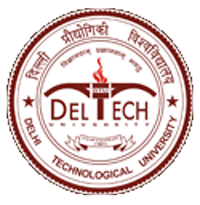Please use this identifier to cite or link to this item:
http://dspace.dtu.ac.in:8080/jspui/handle/repository/20958| Title: | THERMOECONOMIC ANALYSIS OF REFRIGERATION SYSTEM |
| Authors: | GUPTA, SUNIL KUMAR |
| Keywords: | THERMOECONOMIC ANALYSIS REFRIGERATION SYSTEM SPLIT AIR CONDITIONERS (CAC) DEC-SAC SYSTEM COP |
| Issue Date: | Oct-2024 |
| Series/Report no.: | TD-7487; |
| Abstract: | The application of refrigeration and air-conditioning on a large scale is responsible to produce green-house gases and is a threatening issue concerning global warming. The vapor-compression refrigeration system based conventional split air conditioners (CAC) draw a significant amount of gross electrical energy and pose a very serious concern by degrading the environment. Improving the energy efficiency could reduce this damage. With the growing concerns to reduce energy consumption and environmental impact, increasingly significant need is felt for efficient and sustainable cooling technologies. This study assesses the performance of a split air conditioner with and without the implementation of direct evaporative cooling (DEC) for the condenser. A thorough thermo-economic evaluation is conducted for a 5.25 kW capacity split air conditioner (SAC) integrated with direct evaporative cooling, focusing on performance, energy consumption, coefficient of performance (𝐶𝑂𝑃), and economic viability. The reduction in ambient air temperature through evaporative cooling is calculated under various outdoor conditions for New Delhi. The enhanced heat exchange between the evaporatively cooled condenser and ambient air contributes to reduced power input and improved COP. A numerical model is developed to determine the decrease in condenser inlet air temperature resulting from direct evaporative cooling. The multi-objective optimization is carried out with Box-Behnken design (BBD) technique using response surface methodology. The objective functions include 𝐶𝑂𝑃, total cost rate (𝑇𝐶𝑅), and total exergy destruction (𝐸̇ 𝐷,𝑡 ). Design variables include ambient temperature (𝑇𝑎 =30⁰C-45⁰C), relative humidity (𝑅𝐻 =20%-80%), vi and evaporator temperature (𝑇𝑒 =3⁰C-12⁰C). Cooling capacity, life duration, operation hours, interest rate, maintenance factor, and electricity price for the system are considered to be constants. The proposed system significantly enhances air conditioner performance, achieving improvement in the refrigerating effect and saving in work input by 11.59% and 23.53%, respectively in average design conditions (𝑇𝑎 = 37.5℃, relative humidity = 50%, 𝑇𝑒 = 7.5℃). For the whole range of inputs, the COP enhances by 3.53 to 65.21% while total cost rate reduces by 2.23% – 23.2% compared to conventional SAC. The influence of ambient temperature is more significant than other input parameters. Thermoeconomic optimization results in a maximized COP enhancement of 64.23%, along with a 22.91% reduction in 𝑇𝐶𝑅 and a 54.45% reduction in total exergy destruction (𝐸̇ 𝐷,𝑡 ). The water consumption to energy-saving ratio for different cooling months (April to September) vary from 5.5 to 9.8L/kWh. The direct evaporative cooling (DEC) system demonstrates significant energy savings in hot-dry and warm-humid climates of New Delhi, India, with respective average annual savings of electrical energy as 47.17% and 12.11%. The thermoeconomic performance and sustainability of DEC-SAC are notably improved compared to conventional SAC, especially in hot-dry climates. The simple payback period for the proposed system ranges from 1.21 to 2.99 years, depending on the operating conditions. Sustainability indices indicate a substantial environmental improvement with the modified DEC-SAC system. |
| URI: | http://dspace.dtu.ac.in:8080/jspui/handle/repository/20958 |
| Appears in Collections: | Ph.D. Mechanical Engineering |
Files in This Item:
| File | Description | Size | Format | |
|---|---|---|---|---|
| SUNIL KUMAR GUPTA Ph.D..pdf | 4.78 MB | Adobe PDF | View/Open |
Items in DSpace are protected by copyright, with all rights reserved, unless otherwise indicated.



